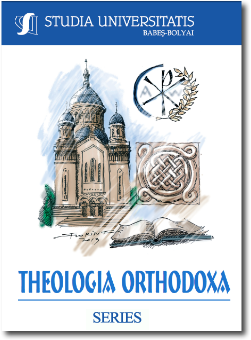THE BYZANTINE ICONIC REPRESENTATION OF THE CHERUBIM: SCRIPTURAL REFERENCE POINTS
THE BYZANTINE ICONIC REPRESENTATION OF THE CHERUBIM: SCRIPTURAL REFERENCE POINTS
Author(s): Stelian Pașca-Tușa, Ioan Popa-BotaSubject(s): Christian Theology and Religion, Theology and Religion, Biblical studies
Published by: Studia Universitatis Babes-Bolyai
Keywords: cherubim; iconic morphology; hermeneia; Miron Cristea; Dionysius of Fourna; Ezekiel; Tetramorph;
Summary/Abstract: The aim of this study is to tackle a subject of iconography from a Scriptural perspective. In other words, we wish to study the extent to which the iconic morphology of the cherubim abides by the details mentioned in the Holy Book and assumes the theological message it conveys. We are aware that the Holy Scripture is not the only source for iconography. Icon painters can also use other sources when creating their artistic representations. However, if the morphology they represent originates in the Holy Scripture, then it is compulsory that the elements taken from the biblical texts should be correct and not at all distorted. In our research, we shall focus especially on the Tetramorph, a morphology that has greatly challenged the creativity of icon painters, in order to clarify the mystery of its origin. Contrary to the general view, some terminologists and icon painters considered this morphology proper to the group of the seraphim and not to that of the cherubim. In our endeavour, we shall also use the method of contextualisation and linguistic analysis, but the main working method is specific to the Christian East and places primacy on the unity of the text and the integrity of the theological message.
Journal: Studia Universitatis Babes-Bolyai - Theologia Orthodoxa
- Issue Year: LXIV/2019
- Issue No: 1
- Page Range: 5-20
- Page Count: 16
- Language: English

